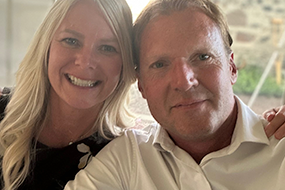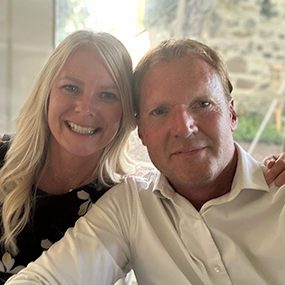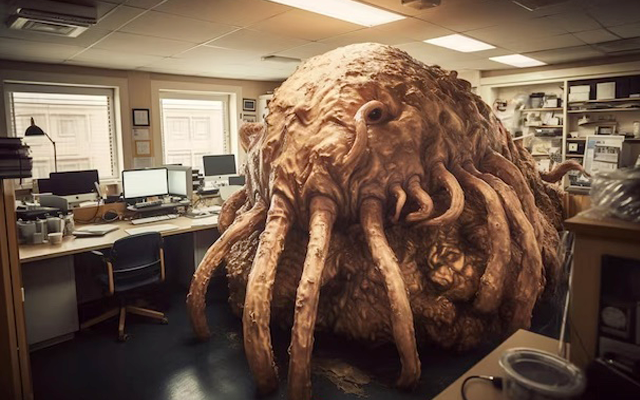CALL OUT THE MONSTER
You may be surprised, but I have found that yhe most difficult thing in business is not finding sales, or dealing with the banks and suppliers. If you’ve been in a management position for more than 5 minutes, you will probably agree it’s the people that give you the most frustration and sleepless nights.

Call out the office monster.
Building a culture in your company is really hard. But it is probably the most rewarding once that culture is established and is working well together. Establishing the culture is the hard work and often requires some initial deep cleaning. If you establish it correctly, preserving that culture becomes much easier.
Building culture has a lot to do with having the right team. And culture is influenced by many factors:
- Established personalities
- Senior team
- Different mindsets
- Upbringing
- Work standards
Any group of human beings has flaws and imperfections – but as a leader building a team – you need to make sure there is not an imbalance of unhealthiness in your team. There needs to be a critical mass of healthiness in any organization or else it will be a losing battle.
The team needs to know the standards of that culture, and once those standards have been established it’s on you as a good leader to enforce the culture. But in order to enforce the culture a few things need to be established:
My Story
At 41 yrs old, I was the New Guy when i was hired at the company walking into a very established tight team of about 12 people. I eventually bought into this company years later and ironically became everyone’s boss. I was an early riser, and was usually the 1st or second person arriving in the morning. As people arrived to work I soon got a glimpse into what that established culture was.
First of all, no-one said ‘good morning’ to anyone. It may sound really trivial, but that is very important to me. I want my staff to be seen and welcomed every day. Many people have garbage to deal with when they get home. I certainly don’t want them to deal with garbage during the day when they are giving me their 8 hours.
People would come in, sit down and begin work. No one would acknowledge anyone, or even lift their heads. It was oddest thing. The atmosphere in the place was thick and heavy.
The people who had been there the longest had their own ‘clique’ and there was clearly a ringleader of this clique. That ringleader controlled the dialogue, and was the gatekeeper of the office.
Within only a few days I could clearly see within days who was ‘in’ and who was ‘out’. They wanted to protect and guard that clique.
Let me first say that there’s nothing wrong with groups of friends – but this was something different. This was intentional preservation and unhealthy manipulation and control of the office. Any new hire was automatically assumed to be a threat of that established culture. The new people clearly knew that these few were the culture influencers. The clique made sure to go out of their way to make them feel that way. The true source of the issue was an imbalance of insecure people who had control of the office.
As a simple example, The Clique Ringleader would go around and water everyone’s office plants in said ‘clique’. That person would purposely avoid watering the plants of anyone NOT in that clique. The Clique would avoid conversation with anyone not in the Clique. They would avoid collaboration. It was basically Kindergarten class for adults.
There would be whispering and chuckling between the people in the clique. When other people not in the clique would leave for lunch, you could hear the clique talk and criticize. The clique would come and go without a hello or a goodbye. It was mentally draining – and ultimately financially draining – for the whole company.
How we began to fracture the black toxic culture.
I was hired about the same time as another person who eventually became a good friend and part of our leadership team. Both of us started the simple practise of wishing everyone a ‘good morning’ as they came in. If there were people already in the office, we would make an effort to wish them a ‘good morning’. After a while this caught on with all the new staff. Everyone began wishing everyone a good morning. To you this might seem very trivial – but it was a start.
As we grew the team with more healthy people, that dark influence on the office got diluted, however it never quite went away. We incorrectly assumed that eventually it would fizzle out – but often if you don’t cut out the cancer completely it will grow in the background and overtake the body again.
COVID made it so much worse.
When COVID hit, we were forced to work remotely via government mandate. All of the teams outside of the Operations Team set up remote offices from home. We established communication structures between teams based on the circumstances, however because of resistance, and lack of strong leadership the clique was once again circumstantially allowed to fester in the office.
Once again, this departmental silo had developed, and once everyone returned back to the office after COVID normalized – the monster in the office had grown even bigger.
How we called out the Monster.
Buying into the company and assuming a leadership role when there were established senior employees around had its own challenges. I believe there was a level of disgruntlement. Because of our lack of experience, there was mistrust and non-confidence. There was also a level of insecurity, and there was a level of resistance to change which was understanding.
Personally I wasn’t strong enough, nor did I trust my GFI (Gut feel indicator). I resisted having hard conversations, and as a result we didn’t establish what we wanted – clearly enough – for our staff.
There was a lack of accountability in the company for many years. We established yearly Team Evaluations that were weighed 50% on performance, and 50% on contribution to a positive work environment. This began to establish expectations of what was required for the new management team.
We began to have hard conversations. People didn’t like the change, and left on their own accord. Some people needed to be fired. We had to discipline and establish what was acceptable and wasn’t acceptable.
What is the cultural standard?
-
Become healthy.
In order to be an excellent leader, you need to be healthy. Your leadership needs to be ultimately motivated by
-
Figure out what you want.
You need to know what kind of culture you and your leadership team wants, and you need to make sure this is discussed with your leadership team.
Do you want to create an environment where there’s no gossip? Write that down. Agree.
Do you want to create an environment where you remove departmental ‘silos’ and you encourage inter-team communication? Write that down. Agree to it.
Make sure everyone is on the same page. Sign off on it. Hold each-other accountable.
You need to lead by example. Talk is cheap. What you commit to, do.
-
Agree to it as a leadership team.
As a leadership team – agree to what is important. Even go so far as to write your own code of conduct.
-
Present it to the entire team.
Your entire team needs to know what the cultural standard is. What is acceptable, what is not. What is tolerated, what is not.
-
Act on it, and quickly.
When issues come up – you need to act quickly.
-
Make perpetrators feel uncomfortable, and they will likely leave.
-
If they don’t then for the sake of the whole team, you need to cut out the cancer.
leb used to get ear aches all the time as a kid. And he wouldn’t say anything until it was too late. The ear ache would start and could have been dealt with easily if we would have known about it when it first started. But he left it – and it would usually be on a Saturday night (Where we’d spend the evening in the hospital) – or one time, he told us about a 1/2 an hour in the car on the way to Florida for a family vacation!
It’s like a sore without attention. It grows and gets infected.
People management to me is the biggest mental drain in being an owner or manager. The Monster is usually personality or employee relational behaviour. It often comes from entitlement, ego, or the assumption that the individual thinks they are ‘untouchable’ – and this tends to give the perceived freedom of misbehaviour. And the way to deal with The Monster is by dealing with it swiftly.
Your primary job as a team leader is to create a vision for your culture, and fight to preserve that culture.
It is not making excuses or ignoring misbehaviour, or letting people’s egos get in the way of Team.
Maintaining your culture and fighting for your team means you need to learn to have difficult conversations. You also need to clearly understand what you want
If you sense an issue, or if there is some kind of issue arising, best to sort it out as early and as often as possible. It likely won’t just smooth over, and it likely won’t just get better on it’s own. It never has for me. Clarity in communication and expectations is one of the best gifts you can give to your team member.
By the way – it’s likely that everyone else knows about the Monster in the office already. It’s on YOU as a good leader and GREAT boss to advocate for your team, you’re options are:
- Make the monster self-aware
- Realign the monster
- Eliminate the monster for the greater good





 Great to meet you, my name is Eddie.
I have been in small business for over 30 years. I have started companies doing business with some of the world's most famous brands.
I've been at the brink of bankruptcy.
I have stories to share. Enjoy.
Great to meet you, my name is Eddie.
I have been in small business for over 30 years. I have started companies doing business with some of the world's most famous brands.
I've been at the brink of bankruptcy.
I have stories to share. Enjoy.


Leave a Comment